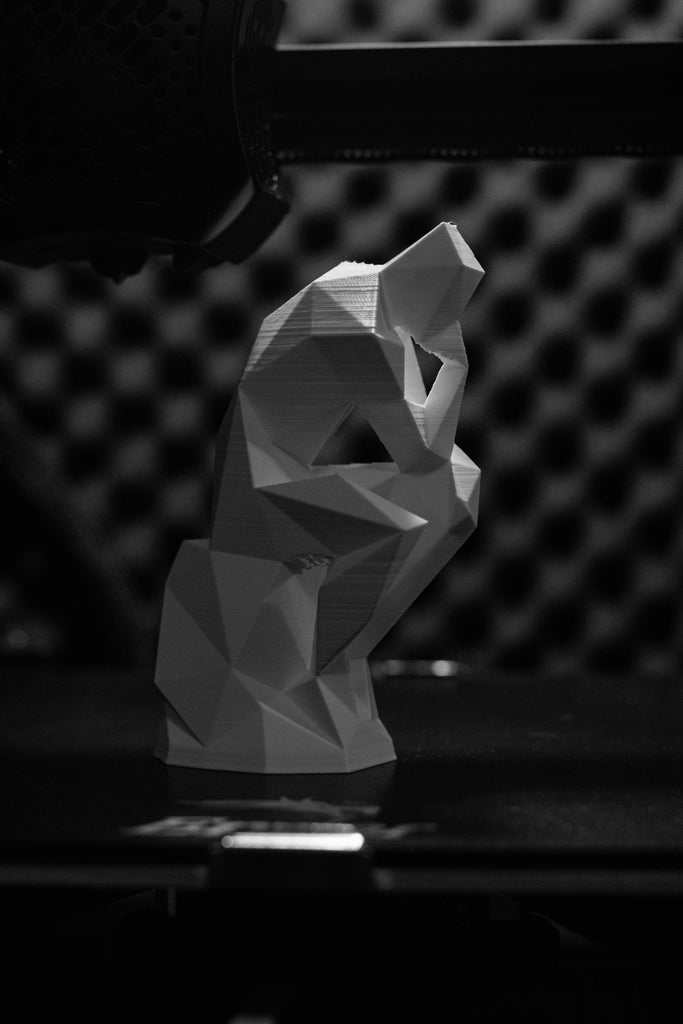If you're new to 3D printing, you may have heard of PLA material. PLA (polylactic acid) is a popular filament used in 3D printing that offers several benefits over other materials. In this blog, we'll cover everything you need to know about PLA material, from its properties to its uses and more.
What is PLA Material?
PLA is a biodegradable thermoplastic made from renewable resources such as corn starch, sugarcane, or tapioca root. It's a popular material for 3D printing because it's easy to use, relatively low-cost, and produces high-quality prints.
PLA is a type of thermoplastic, meaning it becomes soft and moldable when heated and solidifies when cooled. This property makes it an ideal material for 3D printing, as it can be melted and extruded through a nozzle to create complex shapes and objects.
Properties of PLA Material
PLA material offers several unique properties that make it a popular choice for 3D printing. Here are some of the key properties of PLA:
Biodegradable: PLA is made from renewable resources and is biodegradable, meaning it breaks down naturally in the environment over time. This makes it an environmentally friendly choice for 3D printing.
Low Warping: PLA has low warping, meaning it's less likely to warp or deform during the printing process. This property makes it easier to print large objects without the need for additional support structures.

High Precision: PLA is a highly precise material that produces high-quality prints with fine details and sharp edges.
Easy to Use: PLA is easy to use and doesn't require special equipment or settings, making it a great choice for beginners.
Range of Colors: PLA is available in a wide range of colors, making it easy to create colorful prints.
Uses of PLA Material
PLA material is a versatile material that can be used for a wide range of applications. Here are some common uses for PLA:
Prototyping: PLA is often used for prototyping because it's easy to use, produces high-quality prints, and is relatively low-cost.
Toys and Figurines: PLA is a popular choice for creating toys and figurines because it can produce high-quality prints with fine details and comes in a range of colors.
Household Objects: PLA can be used to create a range of household objects, such as phone cases, keychains, and vases.

Medical Applications: PLA is used in medical applications, such as surgical implants, because it's biocompatible and can be broken down by the body over time.
How to Use PLA Material
Using PLA material for 3D printing is relatively easy. Here are the basic steps:
- Load the Filament: Load the PLA filament into your 3D printer's extruder.
- Set the Temperature: Set the printing temperature to the recommended temperature for your specific PLA filament. This temperature can vary depending on the brand and type of PLA.
- Prepare the Print Bed: Prepare the print bed by cleaning it and applying a bed adhesion solution, such as glue or tape.
- Start Printing: Start the printing process and monitor the print to ensure it's proceeding smoothly.
To get the best results with PLA material, here are some tips:
- Use the Right Temperature: PLA material typically prints at a temperature range of 190-220°C. Always check the manufacturer's instructions for the recommended temperature range for your specific filament.
- Adjust Bed Temperature: The ideal bed temperature for PLA is around 60°C. Adjust the bed temperature depending on the size and complexity of your print.
- Use a Cooling Fan: PLA material tends to cool and solidify quickly, which can lead to uneven printing. Use a cooling fan to keep the temperature consistent and ensure even printing.
- Use Bed Adhesion Solutions: PLA material can sometimes warp or lift from the print bed during printing. To prevent this, use a bed adhesion solution such as glue, tape, or a special print surface.
- Store Properly: PLA material can absorb moisture from the air, which can affect the quality of your prints. Store your PLA filament in a dry, airtight container to prevent moisture absorption
To Conclude
PLA material is a popular and versatile material for 3D printing that offers several benefits over other materials. It's biodegradable, low-warping, easy to use, and produces high-quality prints with fine details. It can be used for a range of applications, including prototyping, toys and figurines, household objects, and medical applications.
With a bit of practice and experimentation, you can become a 3D printing expert with. PLA material is a versatile and easy-to-use material for 3D printing. It offers several benefits over other materials, including biodegradability, low warping, and high precision. With a bit of practice and experimentation, you can create high-quality 3D prints with PLA material. Remember to follow the manufacturer's instructions, adjust your settings accordingly, and store your filament properly to get the best results.
We hope you have gained some good tips and tricks from this article you can start using today to up your 3D printing game. Happy printing!

